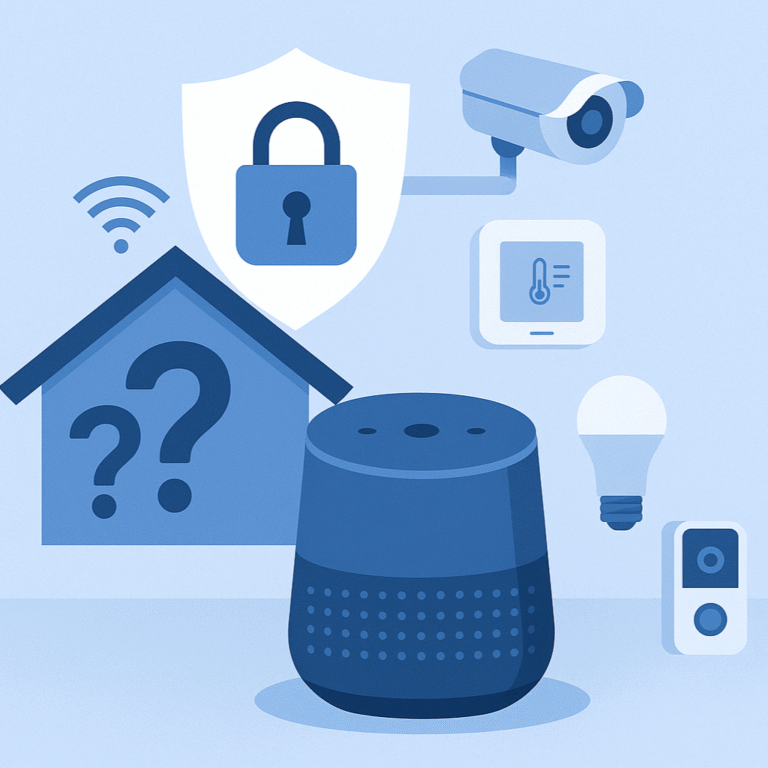In the world of smart home technology, connectivity is everything. The devices you choose—whether smart bulbs, door locks, security cameras, or thermostats—need a reliable communication network to function seamlessly. But with different wireless protocols available, how do you decide which one best suits your home automation needs?
Three of the most commonly used communication protocols are Wi-Fi, Zigbee, and Z-Wave. Each has its strengths and weaknesses, making them ideal for different use cases. Let’s break down the differences so you can make an informed decision.
Wi-Fi: High Speed but High Power Consumption
Wi-Fi is the most well-known and widely used wireless communication technology. Most smart home devices, such as smart speakers, cameras, and doorbells, are Wi-Fi enabled.
Pros:
- High bandwidth: Wi-Fi can handle large amounts of data, making it ideal for video streaming devices like smart cameras and doorbells.
- Broad compatibility: Almost every modern home has a Wi-Fi router, and most devices support Wi-Fi, making it easy to set up.
- No hub required: Unlike Zigbee and Z-Wave, Wi-Fi devices don’t always require an additional hub to communicate.
Cons:
- Higher power consumption: Wi-Fi drains battery-powered devices faster compared to Zigbee and Z-Wave.
- Network congestion: Too many devices on a single Wi-Fi network can lead to interference and slow down overall performance.
- Limited range: Standard home Wi-Fi routers usually cover a range of 100-150 feet indoors, and walls or obstacles can further reduce connectivity.
Zigbee: Low Power, High Device Capacity
Zigbee is a low-power, wireless communication protocol designed for smart home automation. It operates on the 2.4 GHz frequency band, which allows for global compatibility but may also introduce some interference with Wi-Fi networks.
Pros:
- Energy-efficient: Uses significantly less power, making it ideal for battery-operated devices like sensors and smart locks.
- Mesh networking: Devices communicate with each other, extending the range and reliability of the network.
- High device capacity: Zigbee networks can support up to 65,000 devices, making it perfect for large smart home setups.
Cons:
- Requires a hub: Most Zigbee devices need a central hub (such as a SmartThings or Amazon Echo with Zigbee support) to communicate.
- Potential Wi-Fi interference: Since it operates on 2.4 GHz, interference from Wi-Fi networks can occur.
- Limited brand compatibility: While Zigbee is widely adopted, not all brands use the same Zigbee version, sometimes leading to compatibility issues.
Z-Wave: Reliable and Low Interference
Z-Wave is another wireless protocol designed specifically for smart home devices. Unlike Zigbee, it operates on the 800-900 MHz frequency range, which helps reduce interference with Wi-Fi and Bluetooth.
Pros:
- Low interference: Since it operates on a different frequency than Wi-Fi, there’s less chance of network congestion.
- Mesh networking: Like Zigbee, Z-Wave devices extend the network by communicating with each other.
- Good range: Z-Wave has a range of up to 330 feet between devices, significantly more than standard Wi-Fi.
Cons:
- Requires a hub: Just like Zigbee, a central hub is needed to control Z-Wave devices.
- Lower device capacity: Can only support up to 232 devices per network, which may be limiting for extensive smart home setups.
- Proprietary technology: Z-Wave devices must be certified by the Z-Wave Alliance, leading to fewer manufacturer options compared to Zigbee.
Which One Should You Choose?
- For high-bandwidth devices (smart cameras, video doorbells, streaming devices) → Wi-Fi is the best option.
- For low-power, battery-operated devices (motion sensors, smart locks, thermostats) → Zigbee or Z-Wave is preferable.
- For large smart home networks with many devices → Zigbee can support the most devices.
- For reliability with minimal interference → Z-Wave is a great option.
Final Thoughts
Choosing between Wi-Fi, Zigbee, and Z-Wave depends on your smart home goals. If you’re just starting out and want simple plug-and-play devices, Wi-Fi is a solid choice. If you’re building a full-fledged smart home with many connected devices, Zigbee or Z-Wave can offer better efficiency and reliability.
By understanding these differences, you can optimize your smart home for seamless automation and control. No matter which protocol you choose, make sure your devices are compatible to avoid connectivity issues down the road.
Want to learn more about smart home technology? Stay tuned for more expert insights on HutGizmo.com!




